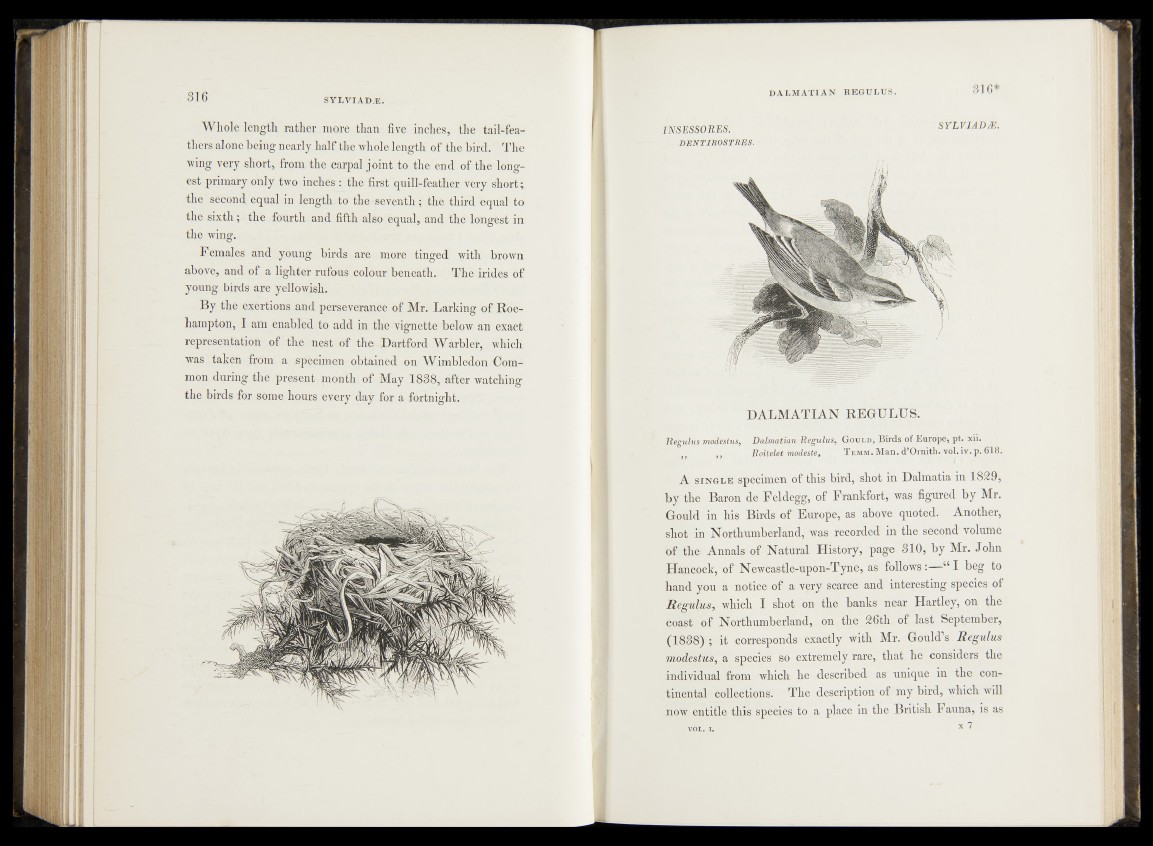
Whole length rather more than five inches, the tail-feathers
alone being nearly half the -whole length of the bird. The
wing very short, from the carpal joint to the end of the longest
primary only two inches : the first quill-feather very short;
the second equal in length to the seventh; the third equal to
the sixth; the fourth and fifth also equal, and the longest in
the wing.
Females and young birds are more tinged with brown
above, and of a lighter rufous colour beneath. The irides of
young birds are yellowish.
By the exertions and perseverance of Mr. Larking of Roe-
hampton, I am enabled to add in the vignette below an exact
representation of the nest of the Dartford Warbler, which
was taken from a specimen obtained on Wimbledon Common
during the present month of May 1838, after watching
the birds for some hours every day for a fortnight.
INSESSORES.
d e n t i r o s t r e s .
SYLVIA DM.
DALMATIAN REGULUS.
Regulus modestus, Dalmatian Regulus, G ould, Birds of Europe, pt. xii.
t) Roitelet modeste, T emm. Man. d’Omith. vol. iv.p. 618.
A s in g l e specimen of this bird, shot in Dalmatia in 1829,
by the Baron de Feldegg, of Frankfort, was figured by Mr.
Gould in his Birds of Europe, as above quoted. Another,
shot in Northumberland, was recorded in the second volume
of the Annals of Natural History, page 310, by Mr. John
Hancock, of Newcastle-upon-Tyne, as follows:—“ I beg to
hand you a notice of a very scarce and interesting species of
Regulus, which I shot on the banks near Hartley, on the
coast of Northumberland, on the 26th of last September,
(1888) ; it corresponds exactly with Mr. Gould’s Regulus
modestus, a species so extremely rare, that he considers the
individual from which he described as unique in the continental
collections. The description of my bird, which will
now entitle this species to a place in the British Fauna, is as
VOL. I. x 7